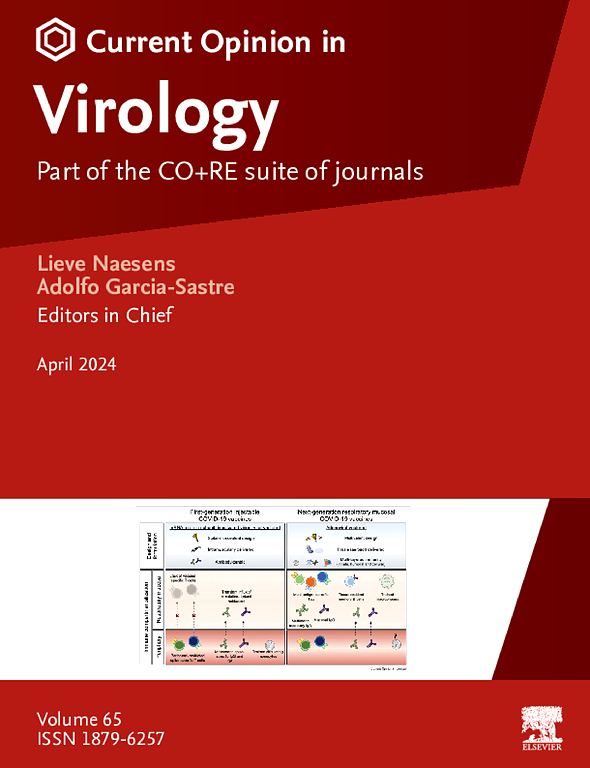Intercellular highways of viral spread: tunneling nanotubes and extracellular vesicles at the maternal–fetal interface
IF 5.1
2区 医学
Q1 VIROLOGY
引用次数: 0
Abstract
The placenta serves as both a conduit and a barrier, facilitating nutrient exchange while shielding the fetus from pathogens. Despite these defenses, several viruses, including ZIKV, CMV, HSV, HIV, LCMV, and HBV, can breach the placental barrier, while others like SARS-CoV-2 and RSV infect placental cells without consistent vertical transmission. Emerging evidence highlights two underexplored intercellular communication mechanisms, tunneling nanotubes (TNTs) and extracellular vesicles (EVs), as critical pathways exploited by viruses to disseminate, modulate immunity, and disrupt placental homeostasis. This review discusses how virally hijacked TNTs and EVs facilitate transmission and immune evasion at the maternal–fetal interface, emphasizing the need to further understand these mechanisms in the context of pregnancy and fetal health.
病毒传播的细胞间高速公路:母胎界面的隧道纳米管和细胞外囊泡。
胎盘既是管道又是屏障,促进营养交换,同时保护胎儿免受病原体的侵害。尽管有这些防御措施,一些病毒,包括ZIKV、CMV、HSV、HIV、LCMV和HBV,可以突破胎盘屏障,而其他病毒,如SARS-CoV-2和RSV,感染胎盘细胞,但没有一致的垂直传播。新出现的证据强调了两个未被充分探索的细胞间通讯机制,隧道纳米管(TNTs)和细胞外囊泡(ev),是病毒传播、调节免疫和破坏胎盘稳态的关键途径。这篇综述讨论了病毒劫持的tnt和ev如何在母胎界面促进传播和免疫逃避,强调需要进一步了解这些机制在妊娠和胎儿健康的背景下。
本文章由计算机程序翻译,如有差异,请以英文原文为准。
求助全文
约1分钟内获得全文
求助全文
来源期刊

Current opinion in virology
VIROLOGY-
CiteScore
11.80
自引率
5.10%
发文量
76
审稿时长
83 days
期刊介绍:
Current Opinion in Virology (COVIRO) is a systematic review journal that aims to provide specialists with a unique and educational platform to keep up to date with the expanding volume of information published in the field of virology. It publishes 6 issues per year covering the following 11 sections, each of which is reviewed once a year: Emerging viruses: interspecies transmission; Viral immunology; Viral pathogenesis; Preventive and therapeutic vaccines; Antiviral strategies; Virus structure and expression; Animal models for viral diseases; Engineering for viral resistance; Viruses and cancer; Virus vector interactions. There is also a section that changes every year to reflect hot topics in the field.
 求助内容:
求助内容: 应助结果提醒方式:
应助结果提醒方式:


